Jul 16, 2024
•
Zach Hudson
Step into a world where nature's beauty meets homey comfort. Rustic interior design transforms your space into a warm, inviting retreat with its earthy tones and natural materials!
Imagine stepping into a cozy, inviting space that instantly makes you feel at home. Rustic interior design brings this warmth and natural beauty into your home, creating an atmosphere filled with charm and comfort. This style, increasingly popular for its connection to nature, emphasizes the use of natural materials, earthy colors, and handcrafted elements. In this article, we'll explore the key elements of rustic design, various substyles, and room-by-room ideas to help you incorporate this timeless aesthetic into your home.
Rustic interior design is a style that emphasizes ruggedness, natural beauty, and a connection to the outdoors. It incorporates elements like reclaimed wood, stone, and natural fibers to create a warm, inviting atmosphere. This design style often features a neutral color palette, comfortable furnishings, and an emphasis on handmade or vintage items.
The increasing popularity of rustic design can be attributed to its ability to create a cozy, inviting space that feels both timeless and welcoming. Whether you're decorating a country cabin or a modern city apartment, rustic interior design can bring a touch of nature's beauty into your home.
What is Rustic Interior Design?
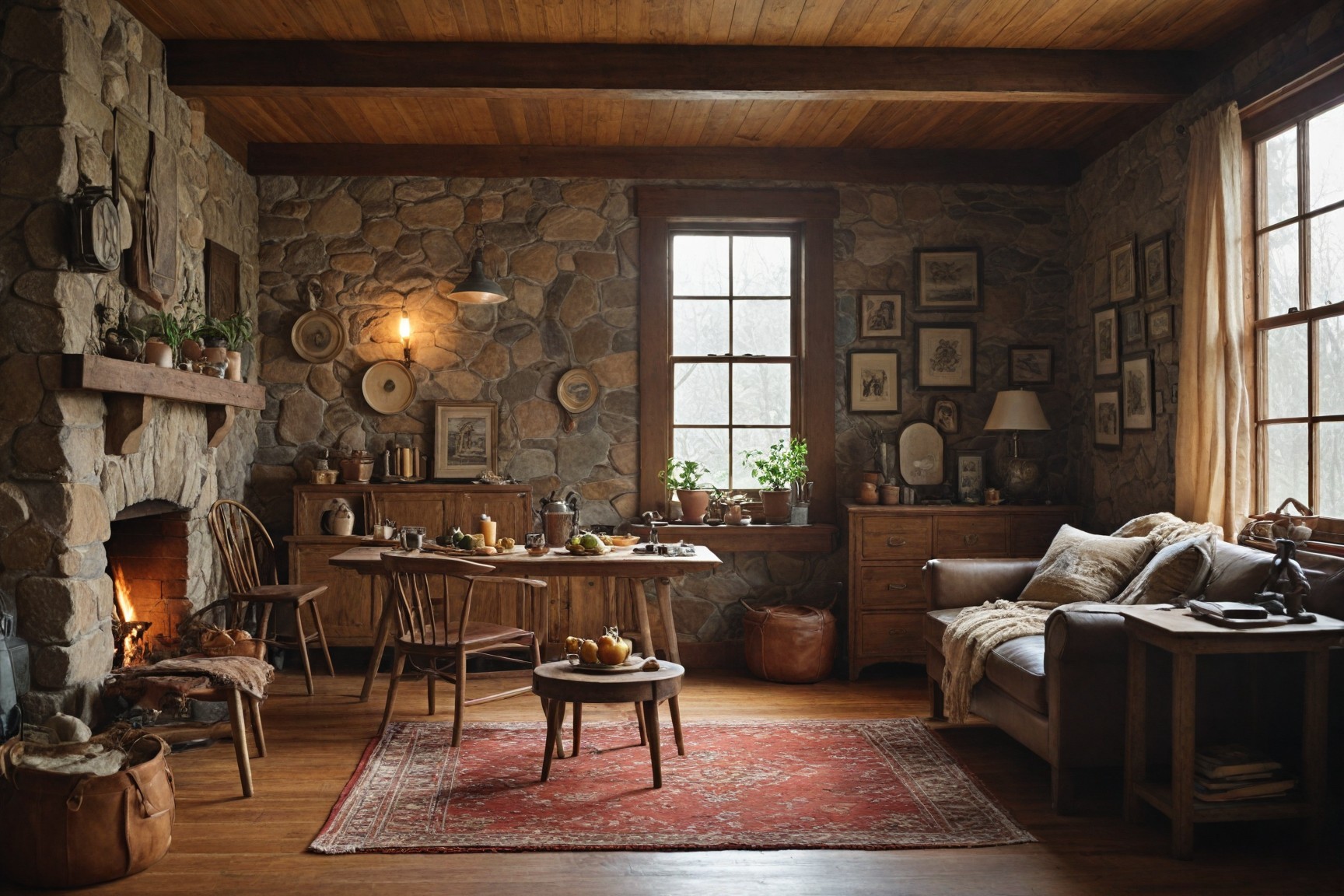
Rustic interior design emphasizes natural materials, earthy colors, and a cozy, lived-in feel. This style uses wood, stone, and leather, incorporating handcrafted and vintage pieces to create a warm and inviting atmosphere. The focus is on simplicity, functionality, and natural beauty, making spaces feel both comfortable and authentic.
History and Origins of Rustic Design
Rustic design traces its roots to rural and countryside living. Influenced by the practical needs of rural areas, it features readily available natural materials and durable, long-lasting furniture. Over time, rustic design has evolved, incorporating elements from other styles while maintaining its core principles of simplicity, functionality, and natural beauty.
Rustic Design vs. Other Popular Interior Styles
Rustic interior design stands apart with its emphasis on natural materials, earthy colors, and a cozy, lived-in feel. Unlike modern and minimalist styles, which focus on sleek lines and simplicity, rustic design creates a warm and inviting atmosphere. While bohemian design also embraces comfort, rustic design uniquely incorporates more natural and rugged elements. Combining rustic design with elements from other styles can create a personalized space that reflects the homeowner's taste and personality.
Key Elements of Rustic Interior Design
Rustic interior design emphasizes the use of natural materials, earthy colors, textured fabrics, handcrafted and vintage pieces, and a cozy, inviting atmosphere. These elements collectively create a space that feels warm, comfortable, and connected to nature.
Natural Materials
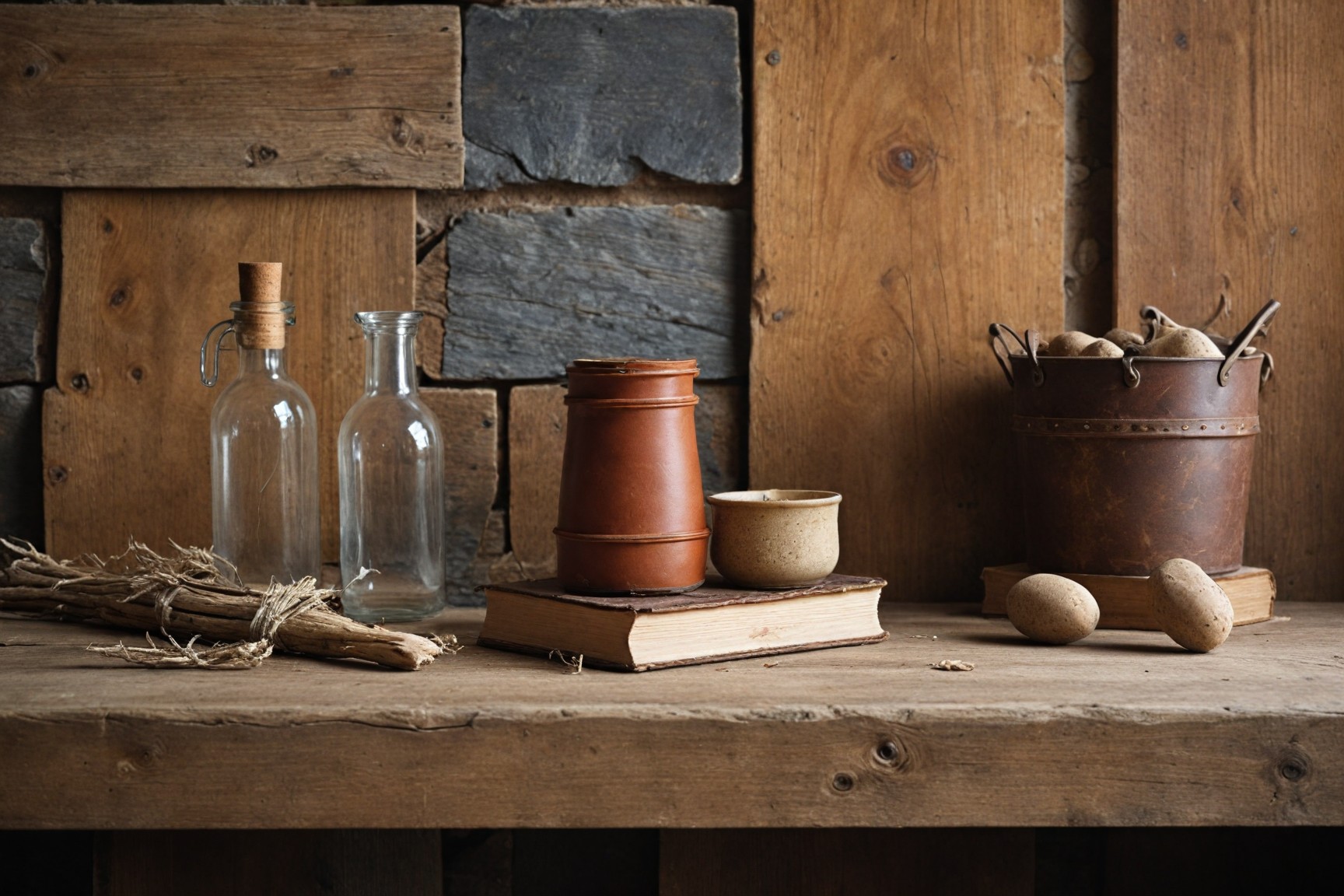
Natural materials are central to rustic design, with a focus on wood, stone, and leather. Reclaimed wood, barn wood, and knotty pine are commonly used for flooring, furniture, and beams, adding a sense of history and character. Stone is often seen in fireplaces, accent walls, and flooring, providing texture and a natural element. Leather, used in furniture upholstery and decorative pieces, adds warmth and richness to the space.
Earthy Color Palette
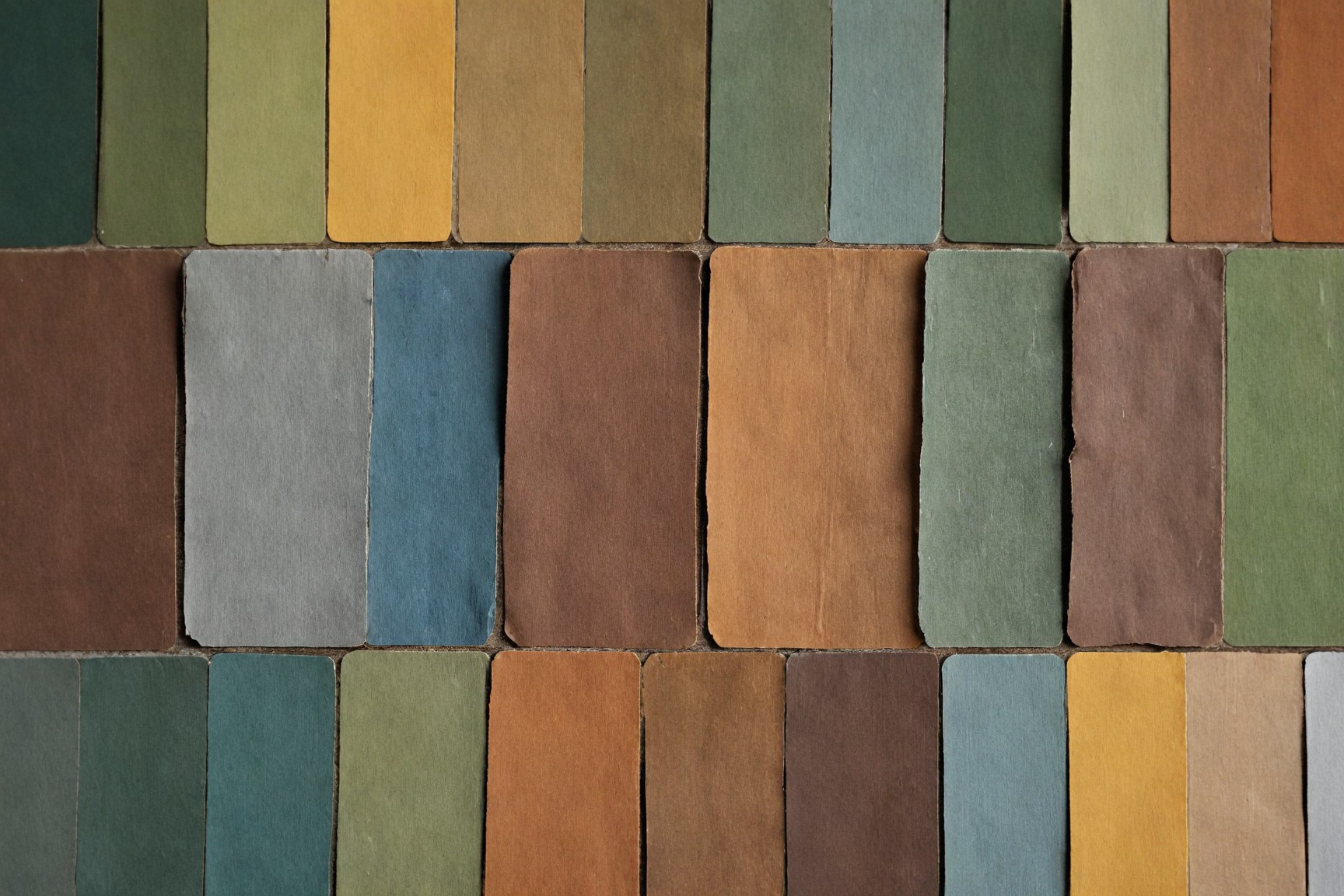
The earthy color palette typical of rustic design includes warm browns, greens, and grays inspired by nature. These colors create a cozy and inviting atmosphere. Warm brown can be used for walls, green accents can be incorporated through plants and artwork, and gray can be integrated via stone or metal elements. Combining these with other natural hues, such as blues and yellows, helps to create a balanced and harmonious color scheme.
Textured Fabrics and Surfaces
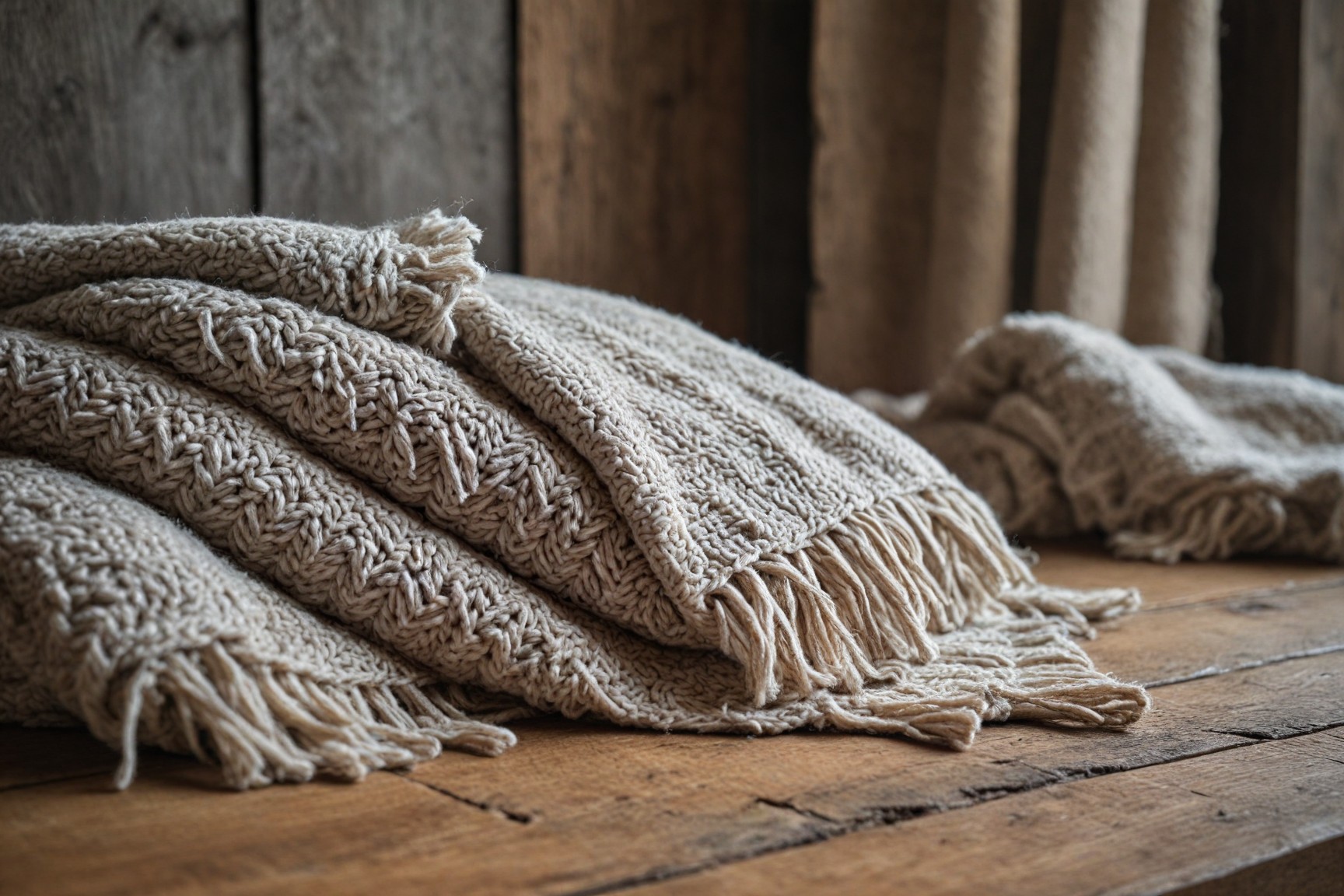
Textured fabrics and surfaces add depth, visual interest, and coziness to rustic interiors. Chunky knit blankets, wool rugs, and burlap or linen curtains are commonly used. Textured surfaces like rough-hewn wood, distressed metals, and natural stone contribute to the rustic aesthetic. Layering these textures creates a rich, inviting atmosphere.
Handcrafted and Vintage Pieces
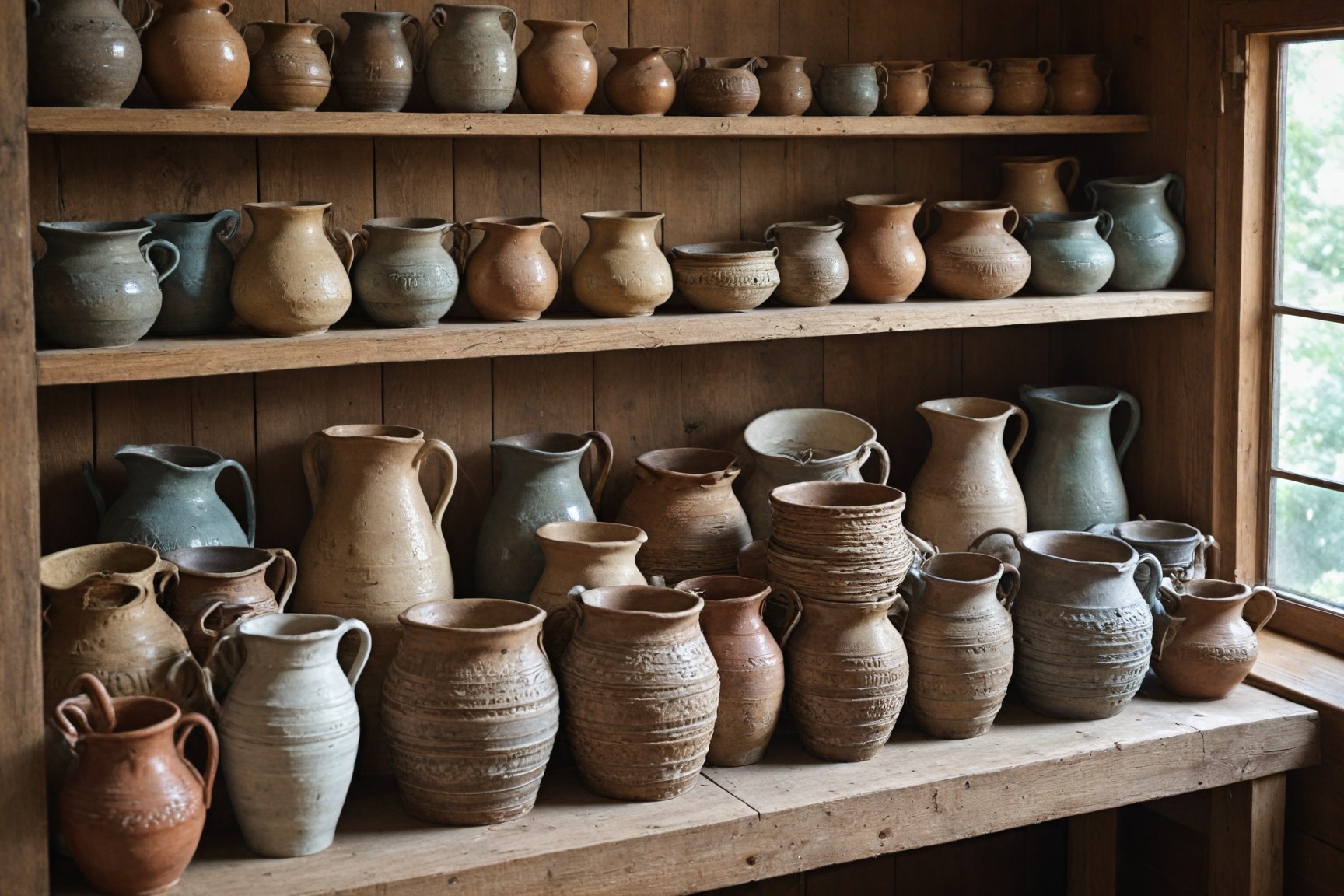
Handcrafted and vintage pieces add history, authenticity, and character to rustic spaces. Items like pottery, baskets, and handwoven textiles bring a personal touch while supporting local artisans. Vintage furniture, reclaimed wood decor, and antique signs or photographs contribute to the lived-in feel of rustic design. Incorporating these elements can be done by displaying collections on open shelving or using a reclaimed wood table as a focal point.
Cozy and Inviting Atmosphere
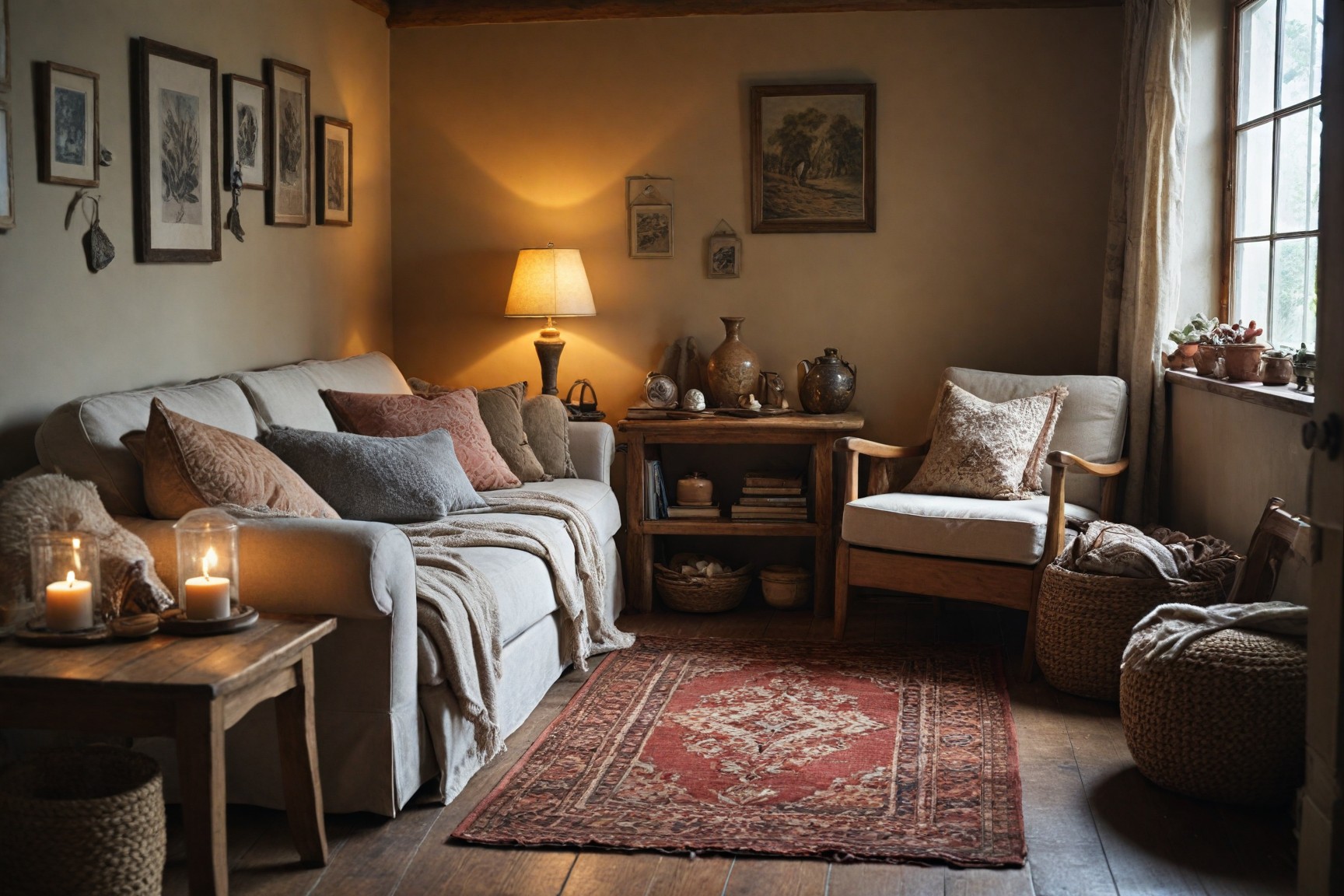
Rustic design aims to create a cozy and inviting atmosphere through the combination of natural materials, earthy colors, textures, and handcrafted pieces. Soft lighting, plush furniture, and cozy textiles enhance this feeling. Examples include adding a soft rug, incorporating plush throw pillows, or using dimmer switches to create a warm ambiance. The use of natural elements and earthy tones helps ground the space, promoting relaxation and a connection to nature.
Substyles of Rustic Interior Design
Modern Rustic
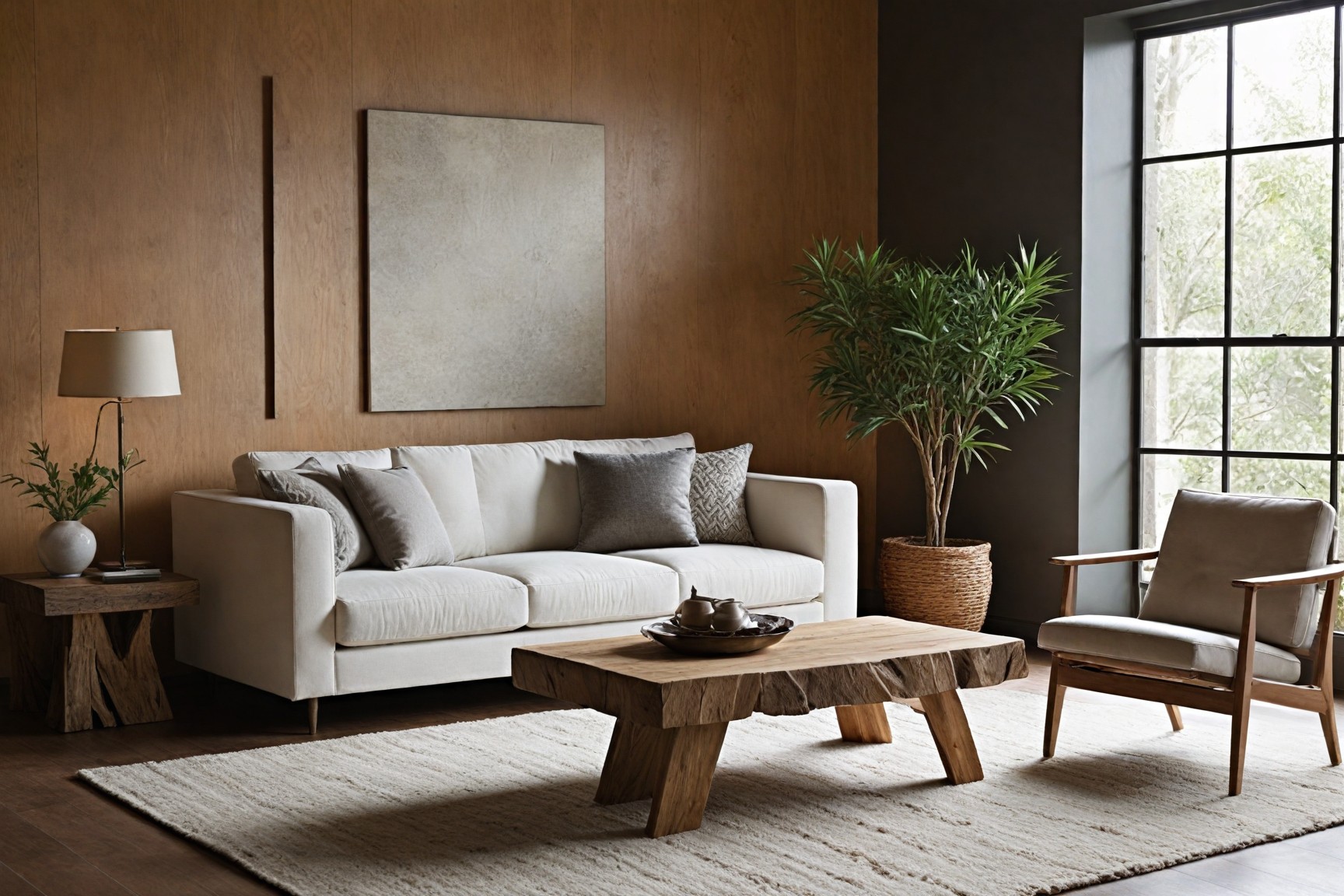
Modern rustic design harmoniously blends contemporary aesthetics with rustic charm, creating a sophisticated yet warm ambiance. This style combines sleek, minimalist furniture with natural, raw materials like reclaimed wood and rough-hewn stone. The color palette typically features neutral tones such as whites, grays, and earth tones, punctuated by pops of color from nature-inspired accents. Modern rustic spaces often incorporate large windows to bring in natural light and showcase views of the outdoors, further emphasizing the connection to nature. This substyle appeals to those who appreciate the warmth of rustic elements but desire a more polished, contemporary look.
Farmhouse Rustic
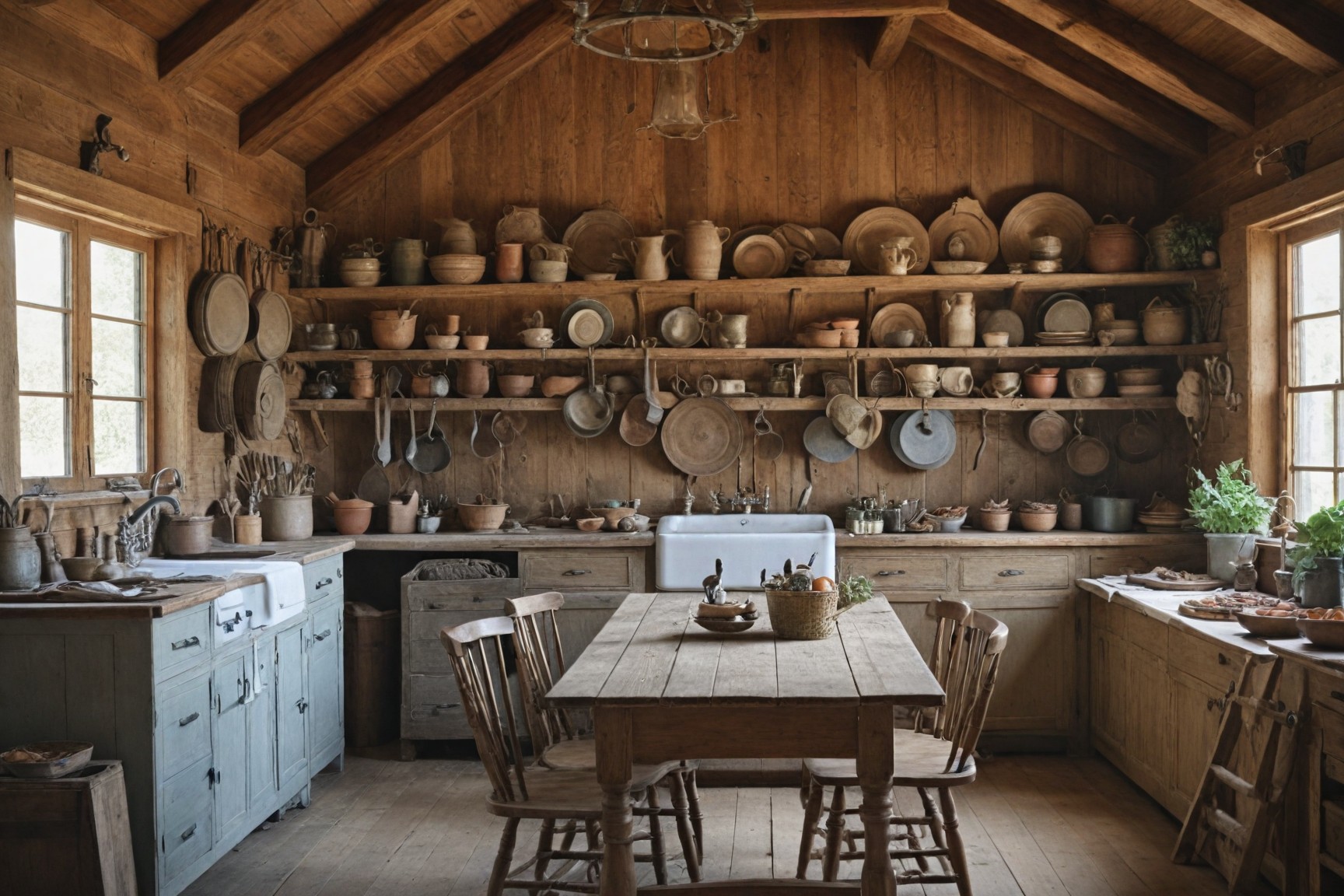
Farmhouse rustic design embodies the cozy, lived-in feel of a traditional countryside home, with a focus on practicality and comfort. This style is characterized by its use of distressed wood, vintage accessories, and a light, airy color scheme dominated by whites and creams. Architectural elements like exposed beams, shiplap walls, and wide plank floors are common features that add authenticity to the farmhouse aesthetic. Furniture pieces are often oversized and comfortable, with a mix of new and antique items creating a collected-over-time look. Farmhouse rustic interiors frequently incorporate natural fabrics like cotton and linen, as well as galvanized metal accents for a touch of rural charm.
Industrial Rustic
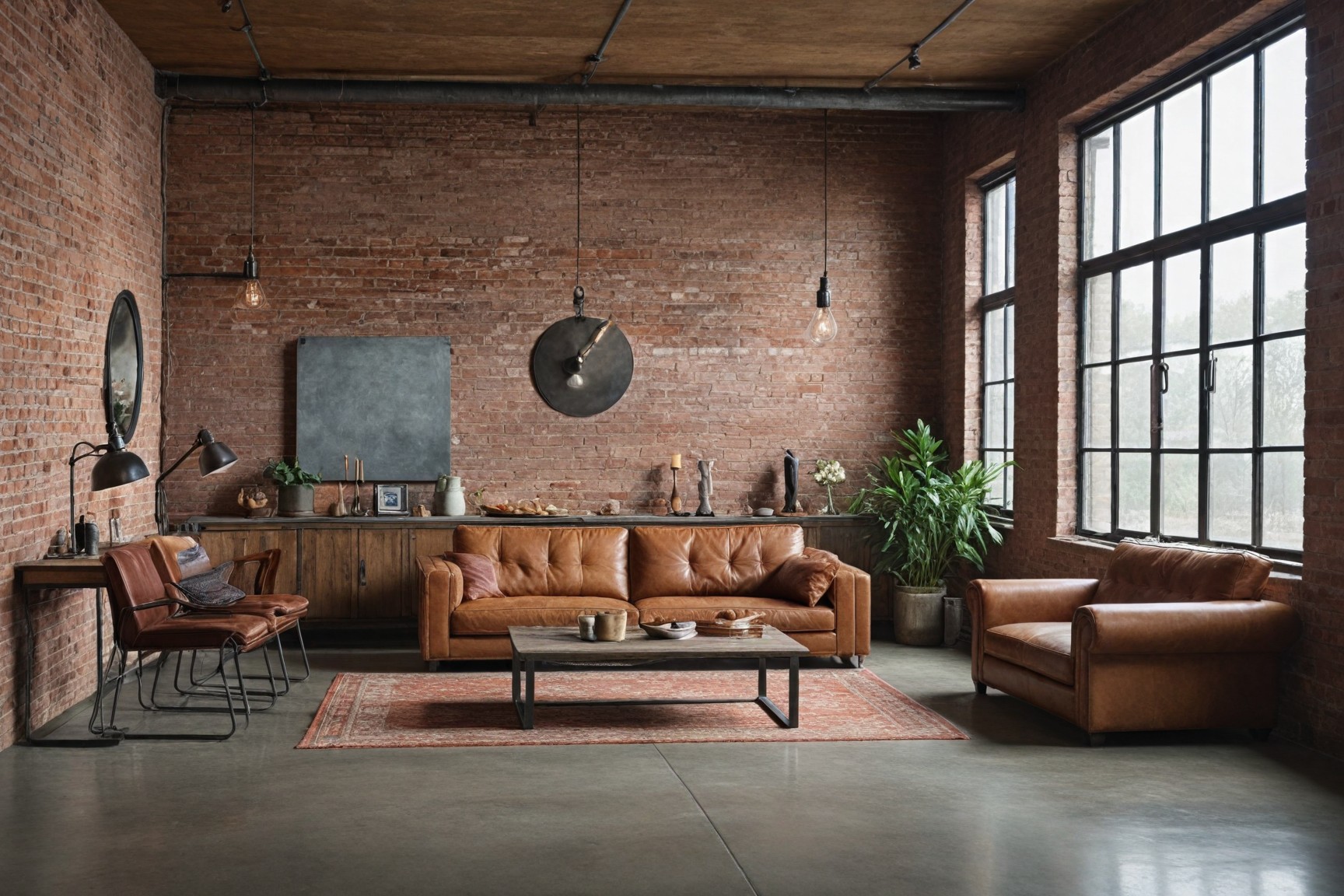
Industrial rustic design marries the raw, unfinished look of industrial spaces with the warmth and comfort of rustic elements. This style is defined by its use of exposed structural elements like brick walls, concrete floors, and metal beams, combined with softer rustic touches. The color palette tends to be neutral and cool, with shades of gray, black, and brown predominating. Furniture in industrial rustic spaces often features a mix of wood and metal, with pieces like reclaimed wood tables paired with steel-framed chairs. Lighting plays a crucial role in this style, with fixtures like Edison bulbs and metal pendant lights adding to the industrial atmosphere while creating a warm glow..
Southwestern Rustic

Southwestern rustic design draws inspiration from the landscapes and cultures of the American Southwest, resulting in a warm, earthy aesthetic. This style is characterized by its use of natural materials like adobe, terracotta, and rough-hewn wood, often combined with handcrafted textiles featuring bold geometric patterns. The color palette is inspired by the desert, featuring warm oranges, reds, and browns, accented with turquoise and other vibrant hues. Southwestern rustic interiors often incorporate Native American and Spanish colonial influences, seen in elements like Navajo rugs, hand-painted tiles, and wrought iron details. This style creates a sense of warmth and history, with spaces that feel both grounded and vibrant.
Cabin Rustic
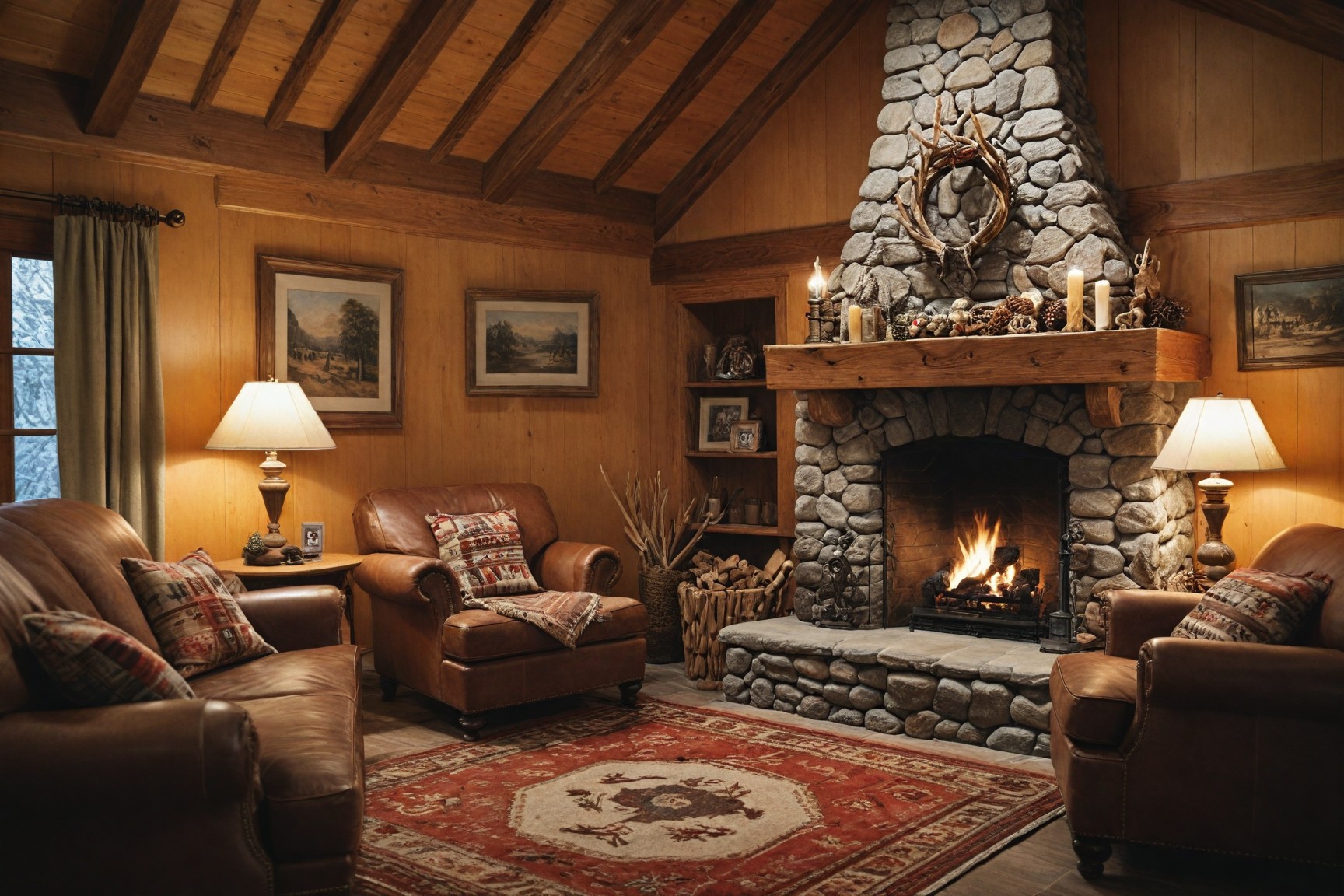
Cabin rustic design evokes the cozy, secluded feel of a mountain retreat, emphasizing natural materials and a connection to the outdoors. This style is defined by its use of whole logs or rough-cut lumber for walls and structural elements, often left exposed to showcase their natural beauty. Stone is another key material, frequently used for fireplaces, which serve as focal points in cabin rustic interiors. The color palette is inspired by nature, featuring deep greens, rich browns, and warm reds, often complemented by buffalo check or plaid patterns. Furniture in cabin rustic spaces tends to be sturdy and comfortable, with pieces like oversized leather sofas and rocking chairs inviting relaxation.
Room-by-Room Rustic Interior Design Ideas
Rustic Living Room
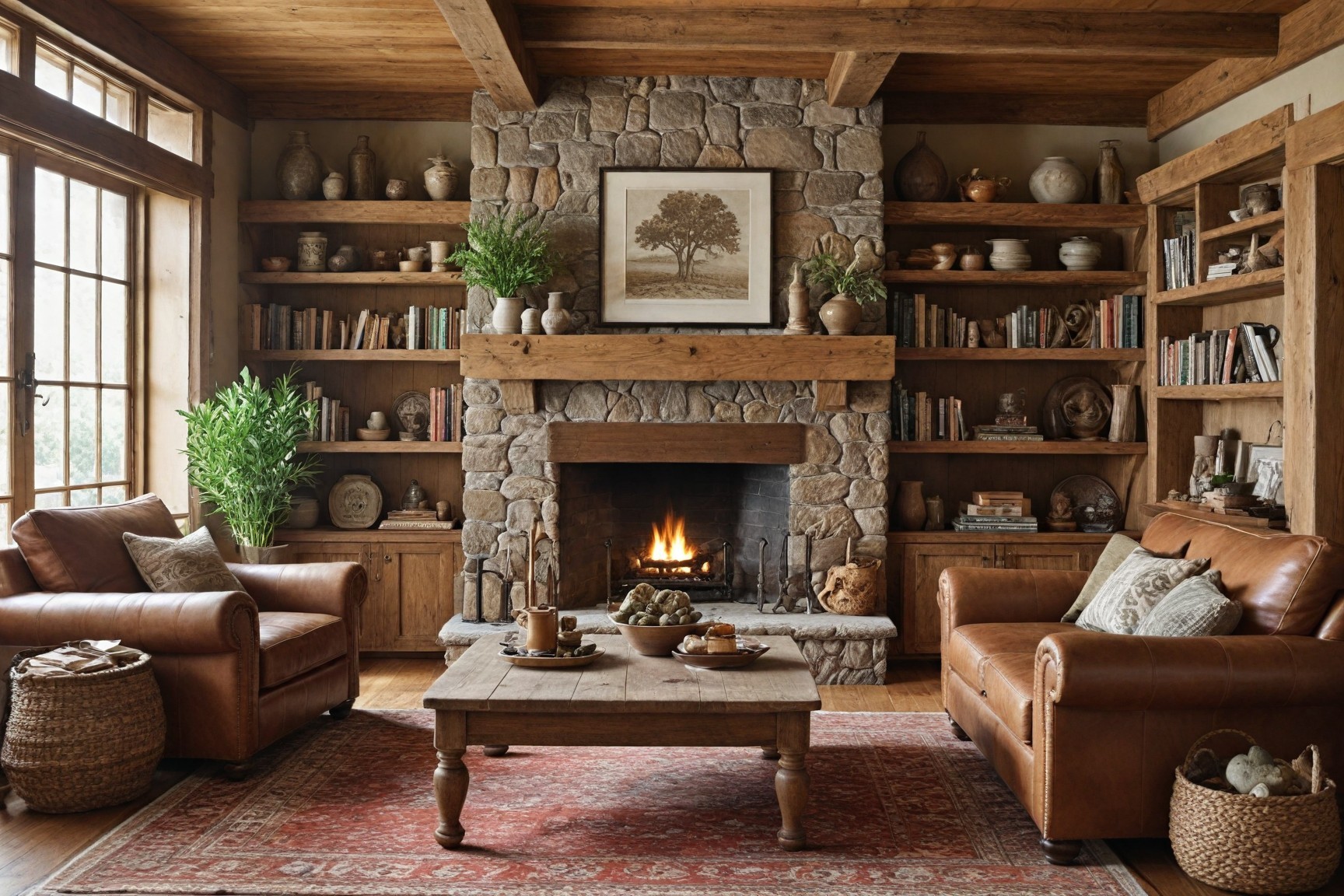
Create a cozy living room by featuring a stone fireplace, combining leather and fabric furniture, and incorporating chunky knit throws and wool rugs. Arrange furniture to promote warmth, like a leather sofa and armchairs around a reclaimed wood coffee table. Use natural materials and earthy colors, such as wood-beamed ceilings and green accents from plants. Accessorize with vintage books and handcrafted pottery on rustic shelves.
Rustic Kitchen and Dining Room
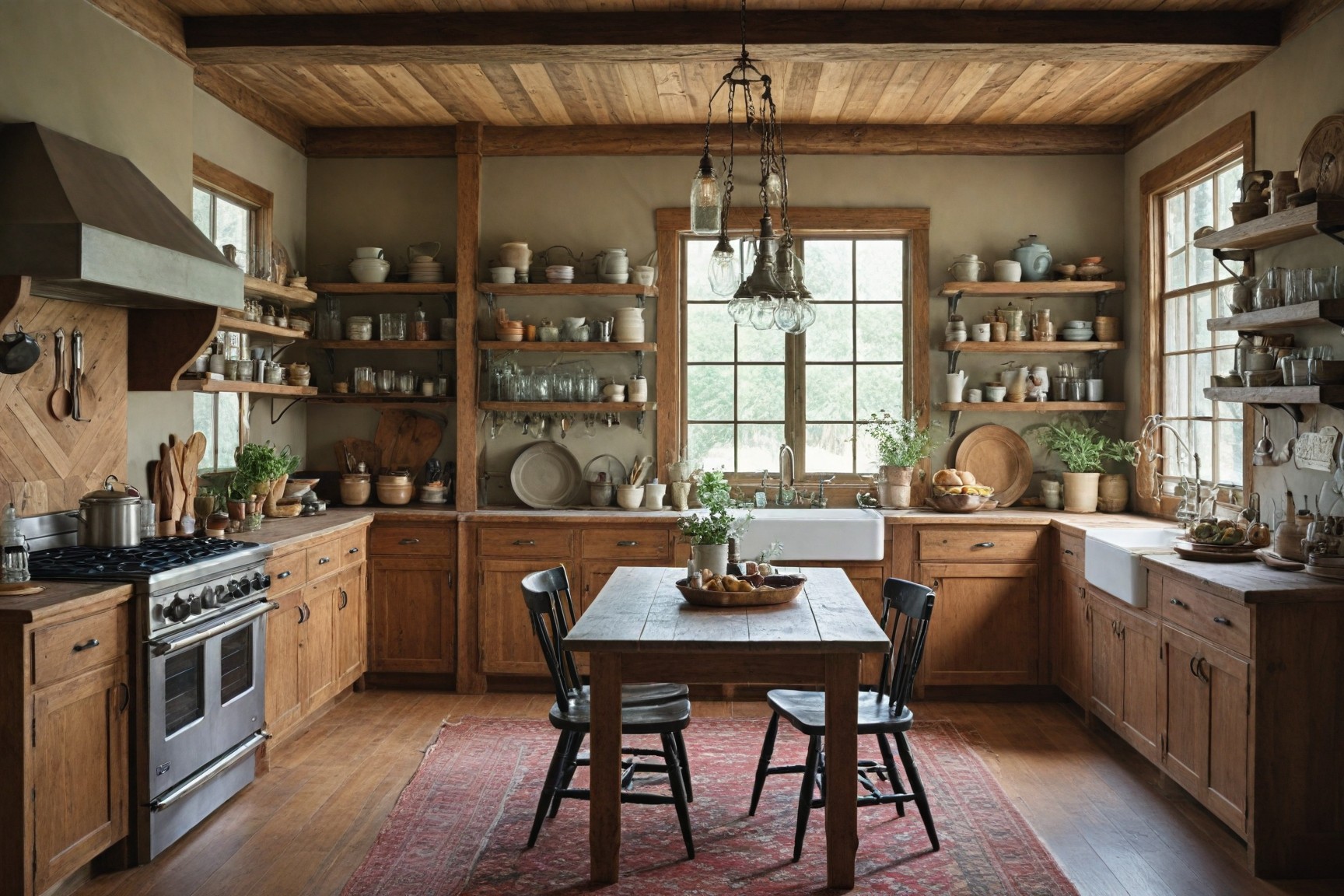
Design a rustic kitchen with reclaimed wood cabinets, a farmhouse sink, and vintage kitchenware. Use open shelving to display mason jars and add a butcher block island. Incorporate natural materials like a stone backsplash and vintage rugs. For the dining area, use a reclaimed wood table with mismatched chairs and a wrought iron chandelier for elegance.
Rustic Bedroom
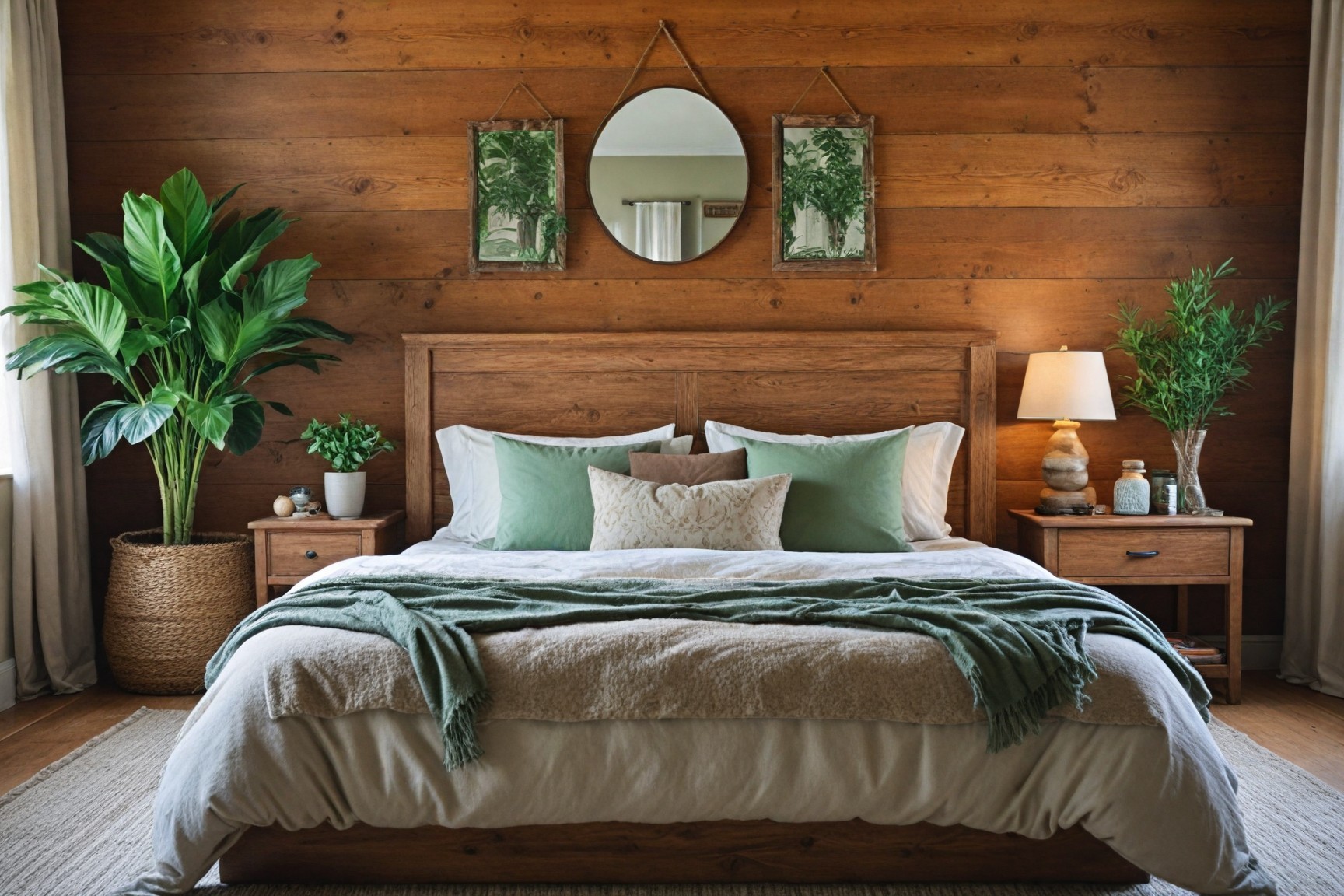
Create a cozy bedroom with a wooden headboard, layered textiles, and nature-inspired decor. Use soft fabrics like linen and wool, and add plush rugs. Incorporate natural materials and earthy colors, such as wood-paneled accent walls and green plant accents. Accessorize with vintage mirrors and handcrafted pottery on nightstands.
Rustic Bathroom

Design a rustic bathroom with a wooden vanity, clawfoot tub, and vintage apothecary jars. Use reclaimed wood mirrors and stone vessel sinks. Create a spa-like atmosphere with pebble tile floors and vintage rugs. Accessorize with vintage bottles and handcrafted soap dishes and towel bars.
Rustic Home Office

Create a functional rustic home office with a reclaimed wood desk, industrial-style lighting, and vintage maps or photographs. Incorporate a leather desk chair and a cozy reading nook with a plush armchair and wool throw. Use natural materials and earthy colors, such as wood-paneled accent walls and green accents. Accessorize with vintage globes and handcrafted desk accessories.
Embrace Rustic Charm in Your Home
Rustic interior design combines natural materials, earthy colors, and cozy elements to create a warm and inviting atmosphere. Its versatility allows for adaptation to various personal styles and room types, from modern urban apartments to traditional country homes. This design approach celebrates the beauty of imperfection, embracing the raw textures and organic forms found in nature. By incorporating rustic elements, homeowners can create spaces that feel grounded, authentic, and deeply connected to the natural world. Whether through a full renovation or simple decor updates, experimenting with rustic design can transform your home into a cozy retreat that reflects both personal style and a timeless aesthetic.
Begin Your Rustic Design Journey with Deft Imagine
To bring your rustic design vision to life, consider exploring Deft and its innovative tool, Deft Imagine. As a next-generation product search engine, Deft offers an advanced AI home design generator that allows you to visualize and redesign your space in seconds. With Deft Imagine, you can easily input your room type and style preferences, and even upload images of your existing space. The AI-powered tool then generates high-quality renderings that match your specifications, enabling you to shop for items directly on-screen. This seamless integration of design visualization and product selection makes Deft Imagine an invaluable resource for anyone looking to incorporate rustic elements into their home decor.
